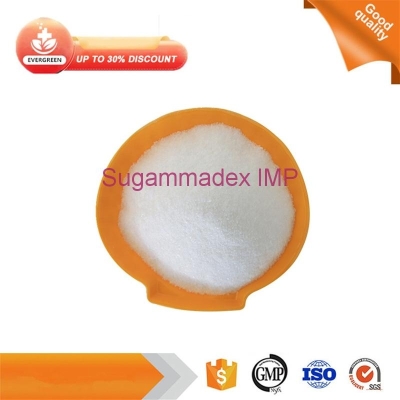-
Categories
-
Pharmaceutical Intermediates
-
Active Pharmaceutical Ingredients
-
Food Additives
- Industrial Coatings
- Agrochemicals
- Dyes and Pigments
- Surfactant
- Flavors and Fragrances
- Chemical Reagents
- Catalyst and Auxiliary
- Natural Products
- Inorganic Chemistry
-
Organic Chemistry
-
Biochemical Engineering
- Analytical Chemistry
- Cosmetic Ingredient
-
Pharmaceutical Intermediates
Promotion
ECHEMI Mall
Wholesale
Weekly Price
Exhibition
News
-
Trade Service
After most stroke patients recover from the hospital and return home, their upper limbs still have movement disorders, especially the distal joints (ie, wrists and fingers), which greatly inhibits their ability to perform activities of daily living (ADL)
.
Recent studies have shown that in the chronic phase after a stroke, physical exercise can achieve significant exercise improvement
Home-based remote rehabilitation, with the minimum assistance and remote supervision (ie self-service operation) provided by professionals, is a promising method for maintaining physical therapy after discharge to improve the wrist/hand motor function of discharged patients
However, few studies have focused on effective self-help upper limb rehabilitation techniques, especially on distal joints
.
At present, most home-based remote rehabilitation studies are based on virtual reality (VR) technology, because home-based VR training is more convenient for outpatients and easier to obtain than conventional treatment in clinics or day hospitals
However, these systems focus on assessing or monitoring limb function rather than providing necessary physical assistance to patients
In this study, the purpose of this study was to determine the feasibility of home self-service training assisted by WH-ENM driven by electromyography for outpatients with chronic stroke, and to investigate its rehabilitation effects
Recruit chronic stroke patients (n = 11)
.
The research team remotely monitors the training progress, including training frequency and duration
According to the following two kinematic parameters: the number of motor units (NMU) and the maximum trunk displacement (MTD), the smoothness of motion and the compensatory motion of the trunk are evaluated
The experimental and training device of WH-ENMS driven by myoelectricity
As there are participants to the training intensity once a week 63.
0 minutes to complete the home-based programs
.
After training, the athletic ability of the entire upper limbs has been improved, which is shown as a significant improvement in FMA, ARAT, WMFT and MAS (PAs there are participants to the training intensity once a week 63.
experimental design
ARAT is mainly used to evaluate the motor function of hand tasks, focusing on finger functions, including holding/releasing objects of different shapes, sizes and weights
.
The significant increase in the ARAT score indicates that when dealing with different objects, the participants’ hand function has been improved, and the coordination of the fingers has also been improved, thereby achieving a fine grasp
ARAT is mainly used to evaluate the motor function of hand tasks, focusing on finger functions, including holding/releasing objects of different shapes, sizes and weights
Patient performing exercise hand trajectory diagram and NMU before and after training
Even if the ability to perform daily tasks is improved after training, the restored motor function may not be converted into the functional use of ADL on paralyzed limbs
.
This may be due to the following two characteristics of chronic stroke patients: (1) learned not to use may have become a habit, although the patient has the ability to move limbs, but the limbs may not be used for functional activities; (2) The unaffected limb attempts to perform all the movements necessary for daily life
.
It is recommended that outpatient rehabilitation should be started as soon as possible to minimize the development of learned non-use and promote the conversion of motor gain into functional use of the affected limb in ADL patients
.
The results show that with the assistance of WH-ENMS driven by electromyography, a home-based remote self-help rehabilitation program is feasible and effective for improving the motor function of upper limbs after stroke
.
.
The results show that with the assistance of WH-ENMS driven by electromyography, a home-based remote self-help rehabilitation program is feasible and effective for improving the motor function of upper limbs after stroke
.
Nam, C.
, Zhang, B.
, Chow, T.
et al.
Home-based self-help telerehabilitation of the upper limb assisted by an electromyography-driven wrist/hand exoneuromusculoskeleton after stroke.
J NeuroEngineering Rehabil 18,137 (2021) .
https://doi.
org/10.
1186/s12984-021-00930-3
, Zhang, B.
, Chow, T.
et al.
Home-based self-help telerehabilitation of the upper limb assisted by an electromyography-driven wrist/hand exoneuromusculoskeleton after stroke.
Home-based self-help telerehabilitation of the upper limb assisted by an electromyography-driven wrist/hand exoneuromusculoskeleton after stroke.
J NeuroEngineering Rehabil 18, 137 (2021).
https://doi.
org/10.
1186/s12984-021-00930-3 https://doi.
org/ 10.
1186/s12984-021-00930-3
Leave a message here







